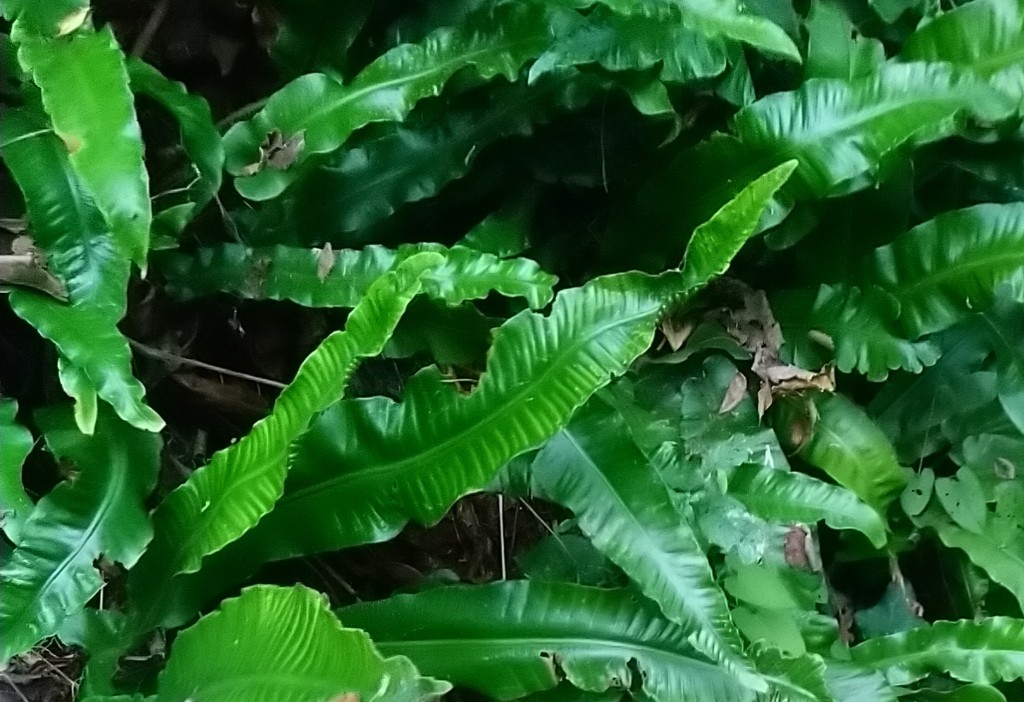
[044] Asplenium scolopendrium, Hart’s-tongue Fern
Introduction
Asplenium scolopendrium, Hart’s-tongue, is a Fern that looks almost like a flowering plant (although it has no stem or flowers.) It is common in Europe and can form extensive areas in the right habitat. In shady places it looks dark green and luxuriant.
Taxonomy
Kingdom – Plants
Division – Vascular Plants
Class – Polypodiopsida – Ferns (and Horsetails)
Order – Polypodiales – Ferns
Suborder – Aspleniineae
Family – Aspleniaceae (Spleenworts)
Genus – Asplenium
Scientific Name – Asplenium scolopendrium
It has the synonym Phyllitis scolopendrium.
Name
Presumably the fronds look like the tongue of a deer. ‘Hart’ is an obsolete word for a fully mature male Red Deer.
We will see the derivation of Spleenwort as a name and Asplenium tomorrow when we look at Asplenium trichomanes. Scolopendrium is derived from the Greek for centipede or millipede, from the appearance of the underside of the fronds.
Ferns
If you leave out the obscure group of Clubmosses (and some extinct species) then Ferns are the only Vascular Plants that are not Flowering Plants or Conifers. They do not produce seeds in the same way as Flowering Plants and Conifers.
I don’t want to go into the details of fern reproduction but here is a simplified view. The plants we see as ferns are completely asexual. No part of them is male or female. They produce tiny spores that fall to the ground (and may be transported elsewhere, for example by the wind.)
It’s these tiny spores that do the reproduction. They grow a little and have male and female parts. By sexual reproduction they produce new plants growing into the ferns that we know. See tomorrow’s blog for more illustrations.
Those who study ferns call themselves pteridologists. Some of the words they use are different and the leaves of ferns are generally called fronds.
Description
Asplenium scolopendrium is an unusual fern with plain undivided fronds. They are dark green, can be half a metre long and have a wrinkled look.
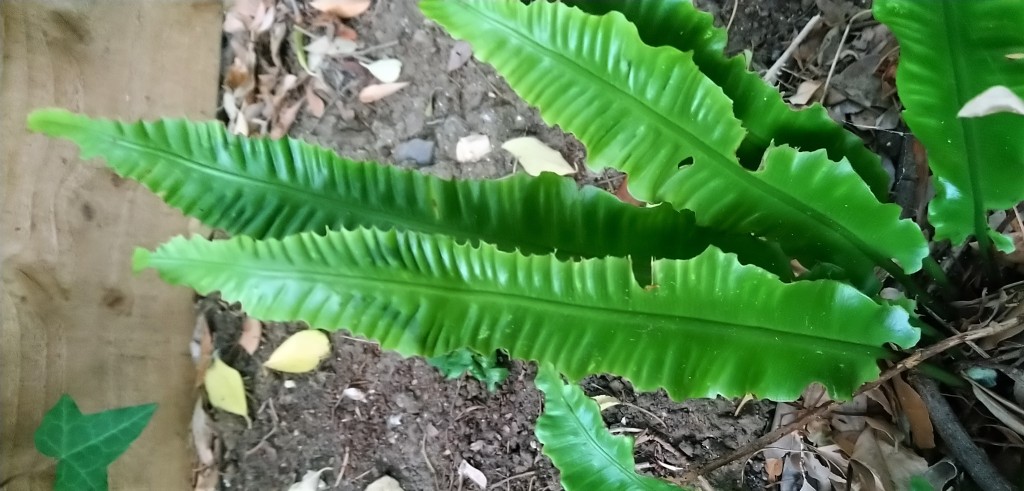
In the right conditions, in shaded woodland, they can grow in large groups.
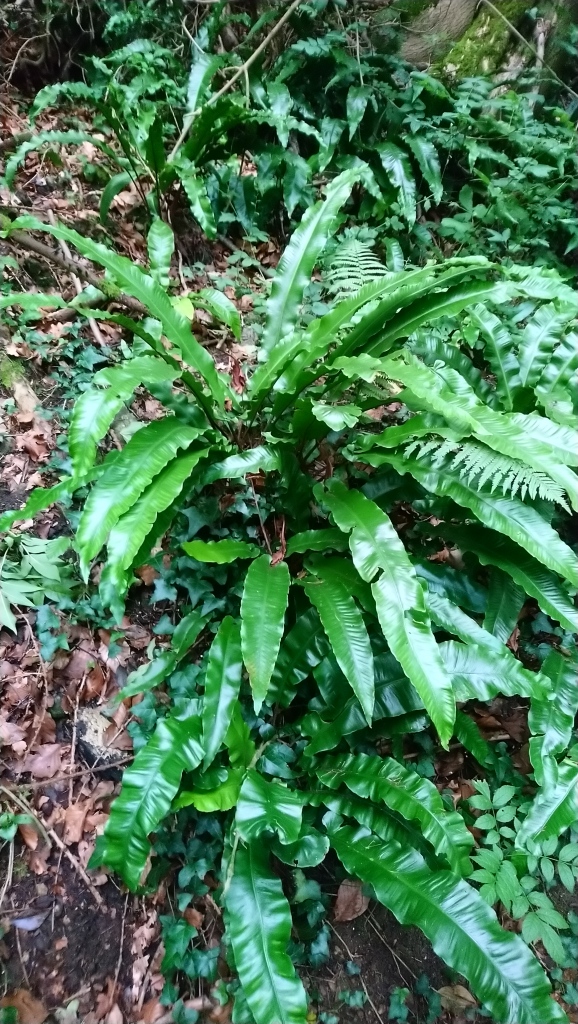
Here is a large fern with a close-up showing the tiny spores on the backs of the leaves.
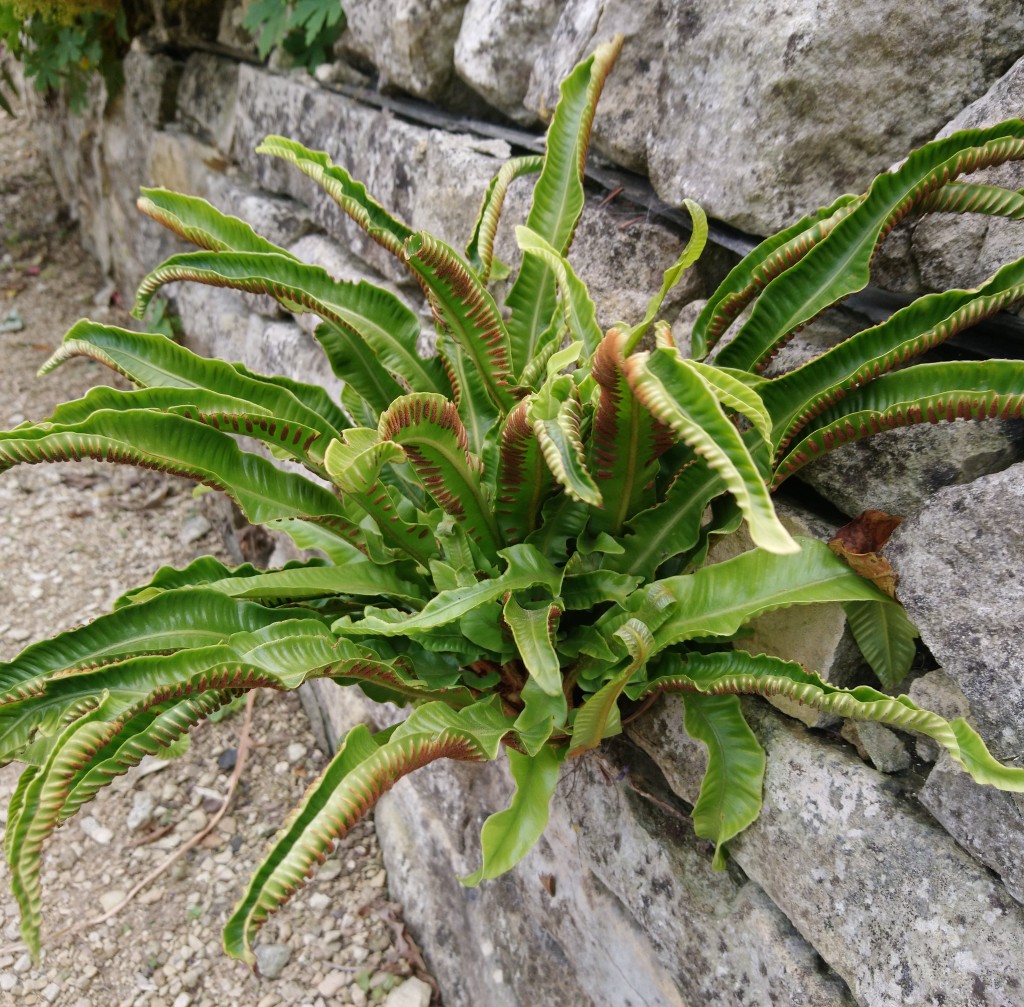

The leaves are a lighter green when not in a shaded environment.
Habitat and use
Asplenium scolopendrium is common and widespread in Britain and also over most of Europe. They like shady conditions and walls.
In can be grown as an ornament plant and it won’t surprise you (after reading tomorrow’s blog) that it used to be used medicinally as a spleen tonic.
Other Notes
I see it often almost at the water’s edge in inaccessible locations such as under bridges. I’m not sure if it likes the water or just the undisturbed walls.
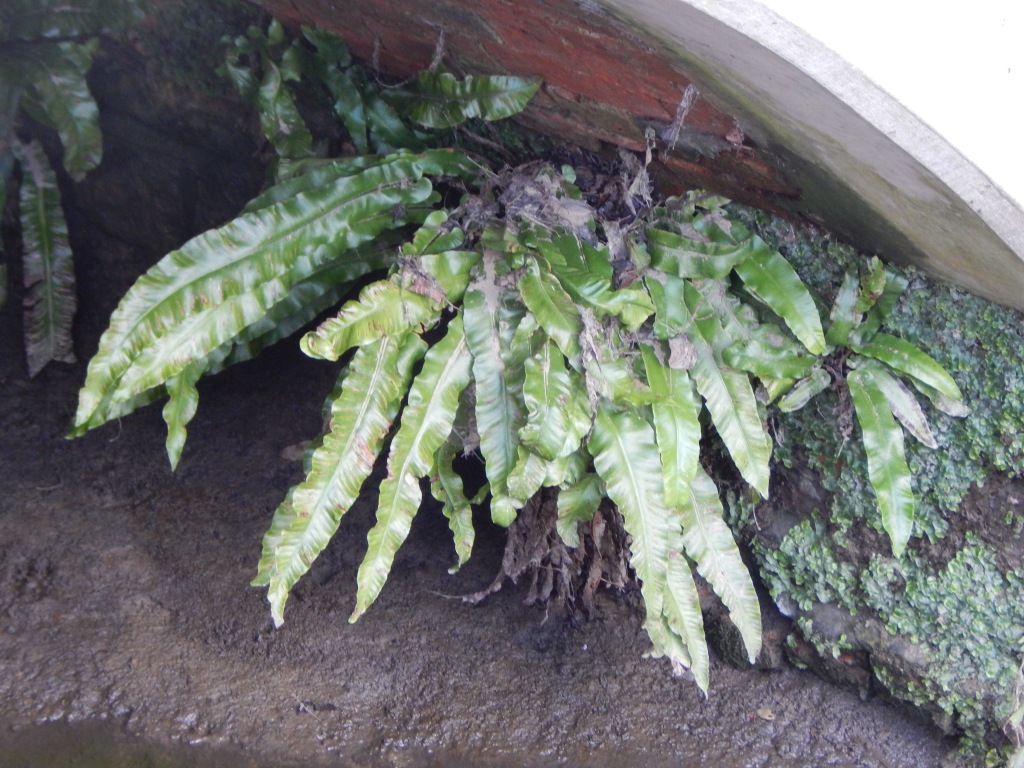
See also
Tomorrow we will look at three more closely related Ferns [045] Maidenhair Spleenwort, Wall-Rue and Rustyback. They are all species of Asplenium but the Hart’s Tongue Fern is disputed – some put it in Asplenium, others feel it should be in a separate genus, Phyllitus.
Much later [284] Bracken is the much more familiar fern we all know.
